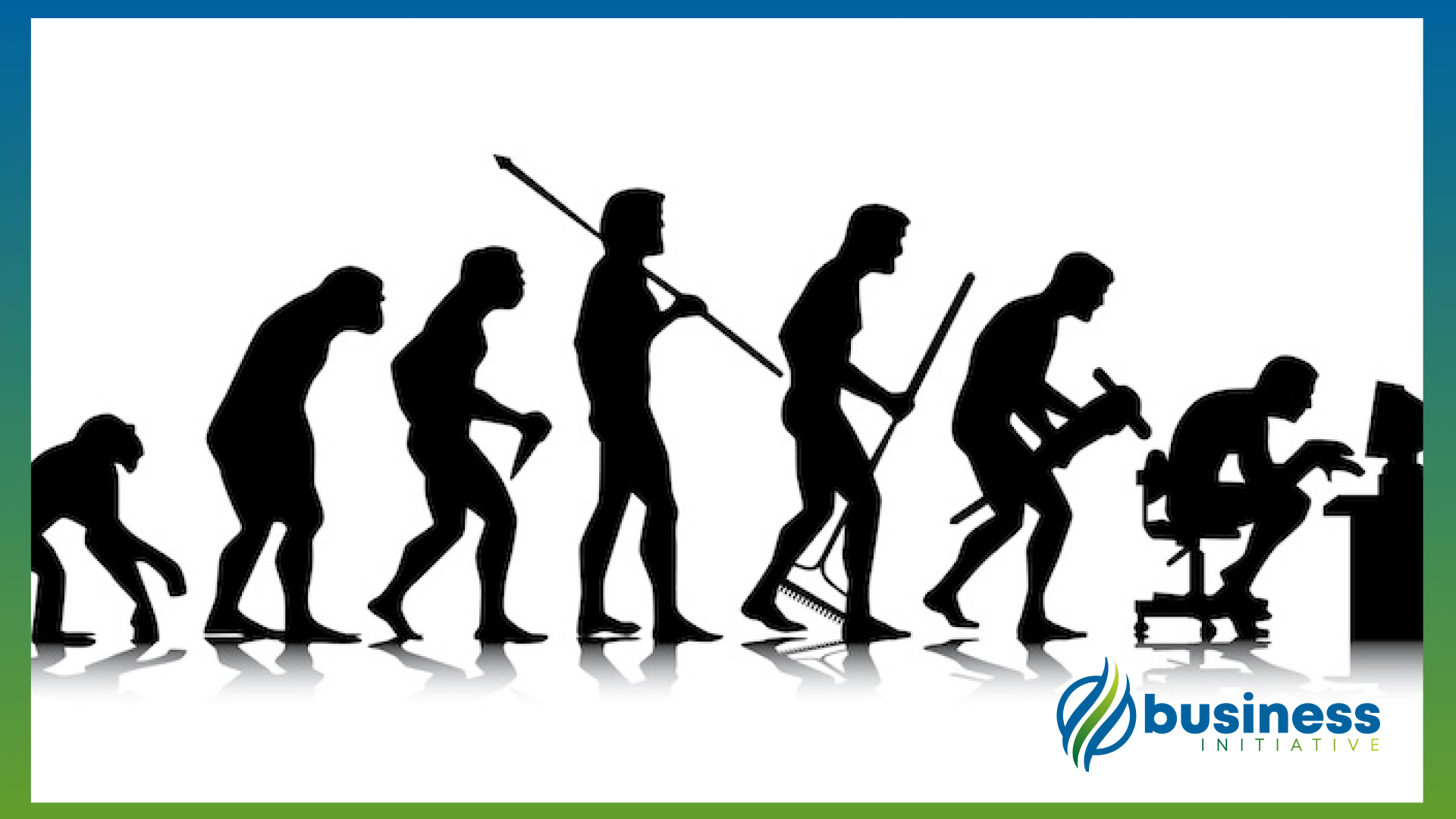The history of business structures is a tale of innovation, adaptation, and resilience.
From the early days of sole proprietorships to the rise of limited liability companies (LLCs), partnerships, and corporations, the evolution of business structure has been a story of constant change and growth.
 Key Takeaways
Key Takeaways
- Historical Evolution: Understanding the historical evolution of business structures, from sole proprietorships to LLCs, can guide entrepreneurs in choosing the right structure for their venture.
- LLC Popularity: LLCs have become increasingly popular due to their flexibility, tax advantages, and limited liability protection, making them a favorable option for new businesses.
- Impact of Technology: Technological advancements, such as e-commerce and blockchain, are reshaping business structures, enabling global reach and decentralized governance.
- Social Responsibility: The rise of benefit corporations reflects a growing emphasis on social and environmental responsibility in the business world.
- Future Trends: Entrepreneurs should stay informed about emerging trends, such as hybrid structures and increased scrutiny of corporate power, to adapt and thrive in a changing landscape.
This article seeks to provide a historical statistical perspective on the development of various business structures and the factors that have influenced their growth.
By understanding the past, entrepreneurs and business owners can gain valuable insights into the present and future landscape of business structures.
 Table of Contents
Table of Contents
A Brief History of Business Structures

The roots of modern business structures can be traced back to ancient Rome, where the societas – a partnership similar to today’s general partnership – was commonly used for commercial ventures.
However, it wasn’t until the late Middle Ages that the concept of a corporation truly took shape.
The first corporations were created as a means to finance large-scale projects, such as trade expeditions and infrastructure development.
Throughout history, the need for more flexible and efficient business structures has led to the development of other forms, such as limited partnerships and joint-stock companies.
In the United States, the first LLC was established in Wyoming in 1977, providing a new paradigm for business owners seeking the benefits of limited liability without the complexities and regulations associated with corporations.
Historical Trends in Business Structures

Over the years, the popularity of various business structures has ebbed and flowed in response to changing economic, legal, and social factors.
Some key trends that have emerged include:
-
The rise of the corporation:
The 19th century saw a surge in the number of corporations, driven by industrialization and the need for large-scale capital investment.
This growth continued into the 20th century, with corporations becoming the dominant form of business in many industries.
-
The emergence of LLCs:
Since their inception in the late 20th century, LLCs have experienced rapid growth in popularity, thanks to their flexibility, tax advantages, and limited liability protection.
Today, LLCs are the most common business structure for new U.S. businesses.
Corporations on the other hand accounted for only 10.8% of all business applications submitted in 2023.
➤ MORE: What makes LLCs so popular?
-
The decline of partnerships:
General partnerships have seen a decline in popularity over the past few decades, as entrepreneurs increasingly turn to LLCs and corporations for their business ventures.
However, limited partnerships continue to be a popular choice for certain industries, such as real estate and private equity.
-
The rise of benefit corporations:
In recent years, there has been a growing interest in social responsibility and sustainability among businesses.
This has led to the emergence of benefit corporations, which are legally required to pursue both financial and social or environmental goals.
In 2024, there are over 6,000 certified B Corporations worldwide.
Today there are B Corps in over 80 countries and in more than 150 different industries.
-
The impact of technology on business structures:
The advent of the internet and digital technologies has had a profound impact on business structures.
E-commerce has enabled small businesses to reach global markets, while also giving rise to new forms of entrepreneurship such as the gig economy.
Additionally, blockchain technology is poised to disrupt traditional business structures by changing how companies interact with customers.
-
The future of business structures:
As the world continues to change at an unprecedented pace, it’s likely that the evolution of business structures will continue as well.
Some experts predict that we may see more hybrid forms emerge that combine elements from multiple existing structures.
Others suggest that we may see a shift towards more decentralized forms of ownership and governance enabled by blockchain technology.
Only time will tell what the future holds for business structures.
Factors Influencing the Growth of Business Structures

Numerous factors have influenced the development and growth of business structures throughout history. Some key drivers include:
-
Legal and regulatory changes:
Changes in laws and regulations have often spurred the evolution of business structures.
For example, the introduction of limited liability for shareholders in the mid-19th century helped fuel the growth of corporations.
Similarly, the passage of the Uniform Limited Liability Company Act in the U.S. in 1996 helped standardize and promote the use of LLCs.
-
Economic and technological shifts:
The rise of the digital economy and the increasing importance of intellectual capital have led many entrepreneurs to seek more flexible and efficient business structures, such as LLCs and S corporations.
-
Cultural and social factors:
Societal attitudes towards entrepreneurship and risk-taking have also played a role in the growth of various business structures.
For instance, the rise of the “gig economy” and a greater emphasis on individualism have contributed to the popularity of sole proprietorships and single-member LLCs.
-
Tax considerations:
Tax laws and regulations have also influenced the popularity of different business structures.
For example, LLCs are often favored by small business owners because they offer pass-through taxation, which allows profits and losses to be reported on the owner’s personal tax return.
Additionally, S corporations are popular among businesses with a limited number of shareholders because they offer similar tax advantages while also allowing for more flexibility in terms of ownership and management.
-
Investor preferences:
The preferences of investors have also played a role in the evolution of business structures.
For example, venture capitalists often prefer to invest in corporations rather than LLCs or partnerships because corporations offer more protections for their investments.
Similarly, publicly traded companies are often seen as more attractive to investors because they provide greater liquidity and transparency.
-
Globalization:
The rise of globalization has led many businesses to consider alternative business structures that allow them to operate across borders more easily.
For example, the European Union recognizes several forms of cross-border corporate entities, including the European Company (SE) and the European Economic Interest Grouping (EEIG).
Social movements have played a role in shaping the growth of certain types of business structures.
For example, the social enterprise movement has led to an increase in the number of businesses seeking B Corporation certification or adopting hybrid legal structures that allow them to pursue both financial and social goals.
Role of Startups and Innovation

These sources provide a starting point for further research and can be cited in your article to support the information presented in the “Role of Startups and Innovation” section.
Startups and innovative business models are at the forefront of driving change in the landscape of business structures.
Their unique needs and approaches are influencing the development and popularity of various business forms.
Here are some key ways in which startups and innovation are shaping the evolution of business structures:
-
Agility and Flexibility:
Startups often require structures that allow for rapid pivoting and adaptation.
This need has contributed to the popularity of LLCs, which offer flexibility in management and operations, as well as ease in changing ownership structures.
-
Funding and Investment:
Innovative funding models, such as crowdfunding and venture capital, have influenced the choice of business structures. Corporations, particularly C corporations, are preferred by many startups seeking venture capital investment due to their ability to issue multiple classes of stock and attract investors.
-
Collaborative Models:
The rise of the sharing economy and collaborative consumption has led to the emergence of cooperative business models and other forms of collaborative structures.
These models prioritize community involvement and shared ownership, reflecting the values of many modern startups.
-
Legal Innovation:
Some startups are exploring new legal structures that align with their social and environmental missions.
For example, Public Benefit Corporations (PBCs) and Certified B Corporations allow businesses to pursue both profit and purpose, catering to the increasing number of socially conscious entrepreneurs.
-
Technology-Driven Structures:
The integration of technology into business operations has given rise to new structures like decentralized autonomous organizations (DAOs) powered by blockchain technology.
These structures offer unprecedented levels of transparency and democratization in governance and decision-making.
As the startup ecosystem continues to evolve, it’s likely that we will see further innovation in business structures to accommodate the changing needs of entrepreneurs and the market.
Understanding these trends can help new businesses choose structures that not only meet their current needs but also position them for future growth and success.
Future Predictions for Business Structures

As we look to the future, several trends are likely to shape the evolution of business structures:
-
Continued growth of LLCs:
The flexibility, tax advantages, and limited liability protection offered by LLCs make them an attractive option for new businesses, and their popularity is likely to continue to grow.
-
Increased focus on social and environmental responsibility:
As more businesses recognize the importance of sustainability and ethical practices, we may see a rise in the adoption of benefit corporations and other socially-conscious business structures.
-
Globalization and digitalization:
The growth of e-commerce and digital platforms may lead to the development of new business structures better suited to the demands of the global digital economy.
-
Increasing use of blockchain technology:
The potential for decentralized ownership and governance offered by blockchain technology could lead to the emergence of new business structures that are more democratic and transparent.
-
Shift towards hybrid structures:
As businesses seek to combine the benefits of different business structures, we may see a rise in the adoption of hybrid legal forms such as the L3C (low-profit limited liability company) or the PBC (public benefit corporation).
-
Greater scrutiny of corporate power:
As concerns about income inequality and corporate influence on society grow, there may be increased pressure on governments to regulate corporations more heavily, leading to changes in corporate governance structures.
FAQs - Frequently Asked Questions About The History of Business Entities

What is a business structure?
A business structure is a legal framework that defines how a business is organized, operated, and taxed.
Learn More...
Business structures vary in terms of legal and tax implications, liability protection, and management flexibility.
Common types include sole proprietorships, partnerships, limited liability companies (LLCs), and corporations.
The choice of structure depends on factors such as the size of the business, the level of risk, and the goals of the owners.
Why is the LLC so popular among new businesses?
LLCs offer a flexible structure, limited liability protection, and favorable tax treatment.
Learn More...
LLCs combine the liability protection of a corporation with the tax advantages and operational flexibility of a partnership.
Owners (members) of an LLC are not personally liable for business debts, and profits can be passed through to members without double taxation.
In 2021, LLCs accounted for 69.4% of new entity formations in the U.S.
How have technological advancements influenced business structures?
Technology has enabled new business models, global reach, and decentralized governance.
Learn More...
E-commerce platforms allow small businesses to access global markets, while blockchain technology enables decentralized autonomous organizations (DAOs) with transparent and democratic governance.
Additionally, digital tools have facilitated the rise of the gig economy, where individuals work as independent contractors.
What is a benefit corporation?
A benefit corporation is a legal structure that requires businesses to pursue social and environmental goals alongside profit.
Learn More...
Benefit corporations balance the interests of shareholders with broader societal and environmental concerns.
They are legally obligated to consider the impact of their decisions on all stakeholders, not just shareholders.
This structure has gained popularity as consumers and investors increasingly value corporate social responsibility.
How do startups influence the evolution of business structures?
Startups drive innovation in business structures to meet their needs for flexibility and investment.
Learn More...
Startups often require agile and adaptable structures to pivot quickly in response to market changes.
They also seek structures that are attractive to investors, such as C corporations for venture capital funding.
The rise of startups has contributed to the popularity of LLCs and the development of hybrid forms like public benefit corporations.
What are the tax implications of different business structures?
Tax implications vary, with sole proprietorships and partnerships facing pass-through taxation, while corporations are subject to double taxation.
Learn More...
Sole proprietorships and partnerships report business income on personal tax returns, avoiding corporate tax.
LLCs can choose between pass-through taxation and corporate taxation.
Corporations face double taxation, where the company pays corporate taxes and shareholders pay taxes on dividends.
S corporations offer a solution by allowing profits to pass through to shareholders without corporate tax.
What trends are shaping the future of business structures?
Trends include the growth of LLCs, increased focus on social responsibility, and the use of blockchain technology.
Learn More...
The flexibility and tax benefits of LLCs are driving their popularity.
There is a rising demand for structures like benefit corporations that prioritize social and environmental goals.
Blockchain technology is expected to introduce more decentralized and transparent business structures, such as DAOs.
Hybrid structures that combine elements of different business forms are also emerging.
In Summary…
The history of business structures paints a fascinating picture of human ingenuity and the relentless drive for progress.
As entrepreneurs and business owners, understanding the evolution of these structures – and the factors that have shaped their growth – can provide valuable context for the decisions we make in the present.
In a rapidly changing world, it is crucial to remain adaptable and open to new ideas, and the lessons of history serve as powerful reminders of the power of innovation and resilience.
Start your business off on the right foot…
Schedule a consultation call with Business Initiative TODAY!
Have any questions?
Reach out here or send Business Initiative a DM on X(Twitter)
To stay informed and be prepared for the future of business, subscribe to our newsletter and continue exploring our resources for entrepreneurs.
Sources
- Harvard Law School Forum on Corporate Governance - Corporate Law Lessons from Ancient Rome
- THE INDUSTRIAL REVOLUTIONS - Chapter 27: Finance and Industrialization
- Wyoming LLC Attorney - The Wyoming LLC Act and the Invention of the Limited Liability Company: WY History
- The University of Pennsylvania Law Review - The Growth and Moral Attitude of Corporations
- Harvard Law School Forum on Corporate Governance - A New Understanding of the History of Limited Liability: An Invitation for Theoretical Reframing
- U.S. Census Bureau - Business Formation Statistics
- B Lab - How many Certified B Corps are there around the world?
- Forbes - How Technology Will Change The Way Business Is Run In 2021
- Harvard Business Review - Blockchain Is Changing How Companies Can Engage with Customers
- McKinsey & Company - Organizing for the future: Nine keys to becoming a future-ready company
- Forbes - What Is The True Effect Of Blockchain On Modern Businesses?
- The Uniform Limited Liability Company Act
- IRS.gov, "Limited Liability Company (LLC),"
- Business Initiative - S Corp vs C Corp: Taxes, Benefits, and Requirements
- Medium - Considering Investor Preferences: Why VCs Prefer C Corporations
- KPMG - United States - Taxation of cross-border mergers and acquisitions
- EUR-Lex - European Company
- EUR-Lex - European Economic Interest Grouping
- Stanford Social Innovation Review - The Rise of a Fourth Sector Skills Set
- 10 Best LLC Services - The Future of LLC Services: Emerging Trends and Predictions
- Globalization and Digitalization
- Harvard Business Review - The Conundrum of Corporate Power
- Harvard Business Review - Blockchain Is Changing How Companies Can Engage with Customers
- Stanford Social Innovation Review - The Rise of a Fourth Sector Skills Set SmallBizPulse - Why Tech Startups Often Choose C-Corporation Structure


